
Abrams Battle Tank is a video game developed by Dynamix and published by Electronic Arts in 1988 for MS-DOS. Designed by Damon Slye, the game is a 3D vehicle simulation of the M1 Abrams tank. The 1991 Sega Genesis port by Realtime Games Software was renamed to M-1 Abrams Battle Tank.
Steel Beasts is the name for a family of tank simulators created by eSim Games for Microsoft Windows.

Silent Service is a submarine simulator video game designed by Sid Meier and published by MicroProse for various 8-bit home computers in 1985 and for 16-bit systems like the Amiga in 1987. A Nintendo Entertainment System version developed by Rare was published in 1989 by Konami in Europe and by Konami's Ultra Games subsidiary in North America. Silent Service II was released in 1990. Tommo purchased the rights to this game and published it online through its Retroism brand in 2015.

Roadwar 2000 is a 1986 video game published by Strategic Simulations, Inc. It is a turn-based strategy game set in a post-apocalyptic future which resembles the world portrayed in the Mad Max films.

F-15 Strike Eagle is an F-15 Strike Eagle combat flight simulator originally released for the Atari 8-bit family in 1984 by MicroProse then ported to other systems. It is the first in the F-15 Strike Eagle series followed by F-15 Strike Eagle II and F-15 Strike Eagle III. An arcade version of the game was released simply as F-15 Strike Eagle in 1991, which uses higher-end hardware than was available in home systems, including the TMS34010 graphics-oriented CPU.

GATO is a real-time submarine simulator first published in 1984 by Spectrum HoloByte for DOS. It simulates combat operations aboard the Gato-class submarine USS Growler (SS-215) in the Pacific Theater of World War II. GATO was later ported to the Apple IIe, Atari ST, and Macintosh. In 1987, Atari Corporation published a version on cartridge for the Atari 8-bit family, to coincide with the launch of the Atari XEGS.
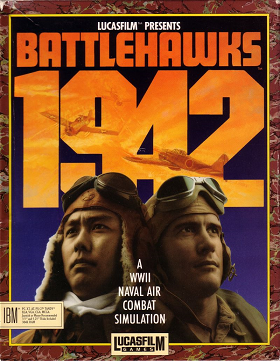
Battlehawks 1942 is a naval air combat combat flight simulation game released in 1988 by Lucasfilm Games. It is set in the World War II Pacific air war theatre, and was the first of Lucasfilm Games' trilogy of World War II flight simulations, followed by Their Finest Hour (1989) and Secret Weapons of the Luftwaffe (1991). The 127-page manual for Battlehawks 1942 includes a 100-page illustrated overview of the Pacific War.
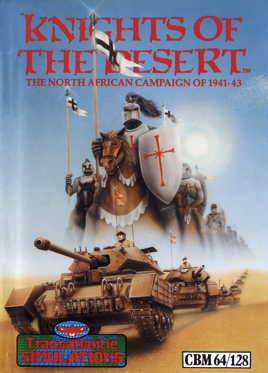
Knights of the Desert is a 1983 computer wargame developed by Tactical Design Group and published by Strategic Simulations for the Apple II, Atari 8-bit family, Commodore 64, MS-DOS, and TRS-80. It is based on the 1940-43 North African campaign.

Their Finest Hour: The Battle of Britain is a World War II combat flight simulation game by Lawrence Holland, released in October 1989 for the Amiga, Atari ST and MS-DOS systems. It was the second game in the trilogy of World War II titles by Lucasfilm Games, the others being Battlehawks 1942 (1988) and Secret Weapons of the Luftwaffe (1991). The game was released with a 192-page manual written by Victor Cross, that provided a detailed historical overview of the battle and pilots' perspectives. An expansion pack, Their Finest Missions: Volume One, was released in 1989.

The Ancient Art of War at Sea is a computer game developed by Broderbund and released for Macintosh and DOS in 1987 as a sequel to The Ancient Art of War.
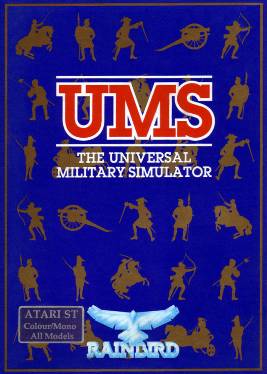
The Universal Military Simulator is a computer game developed by Rainbird Software in 1987 for the Macintosh, Tandy 4000, and IBM PC compatibles. In 1988, both Atari ST, Amiga versions were released. The game was created by Ezra Sidran. The PC and Amiga versions were ported by Ed Isenberg. The game spawned two sequels: UMS II: Nations at War and The War College: Universal Military Simulator 3.

PT-109 is a naval simulation video game developed by Digital Illusions and Spectrum HoloByte in 1987 for the Macintosh and MS-DOS. This game is roughly based on the events involving the Motor Torpedo Boat PT-109.

Harpoon is a computer wargame published by Three-Sixty Pacific in 1989 for DOS. This was the first game in the Harpoon series. It was ported to the Amiga and Macintosh.
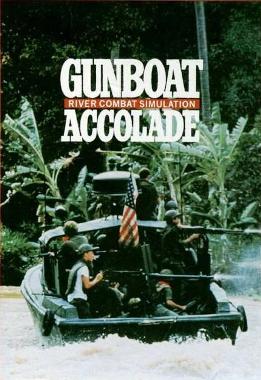
Gunboat is a simulation video game developed and released by Accolade in 1990 for MS-DOS. Ports were released for the Amstrad CPC, ZX Spectrum, Amiga and TurboGrafx-16. It is a combat simulator of a Patrol Boat, River (PBR).

Fighter Bomber is a combat flight simulator developed by Vektor Grafix and released in 1989 by Activision UK for several platforms.

The Hunt for Red October is a video game based on the 1984 book The Hunt for Red October by Tom Clancy. It was released in 1987 and was available for the Atari ST, Amiga, Apple II, Macintosh, ZX Spectrum, MSX, Commodore 64 and IBM PC. A port for the Apple IIGS was released in 1989. The player must navigate the Red October towards U.S. waters while avoiding the Soviet Navy. The game is a combination of submarine simulator and strategy game.

War in Russia is a 1984 computer wargame developed and published by Strategic Simulations for the Apple II and Atari 8-bit family. It was designed by Gary Grigsby.

Reforger '88 is a 1984 computer wargame designed by Gary Grigsby and published by Strategic Simulations. It takes place in a near-future setting and covers a hypothetical conflict between NATO and Warsaw Pact nations.

Objective: Kursk is a 1984 computer wargame designed by Gary Grigsby and released by Strategic Simulations, Inc.
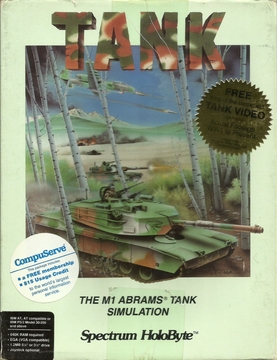
Tank: The M1A1 Abrams Battle Tank Simulation is a 1989 video game published by Spectrum HoloByte.




















